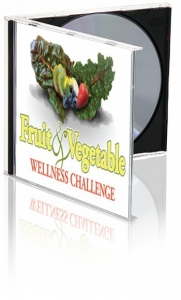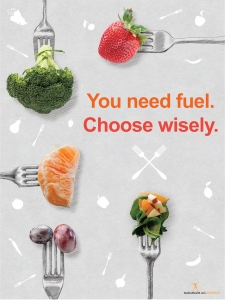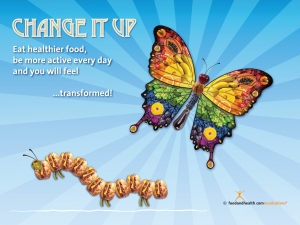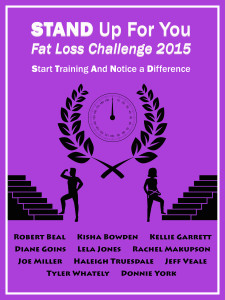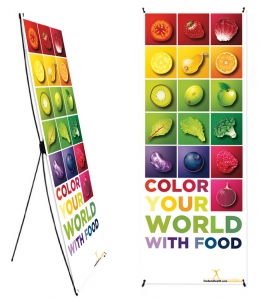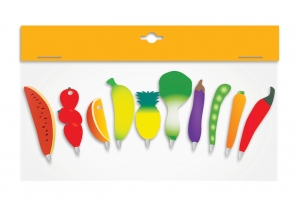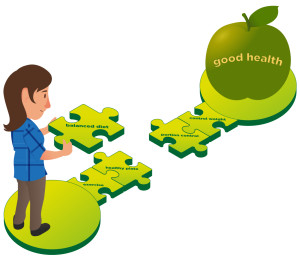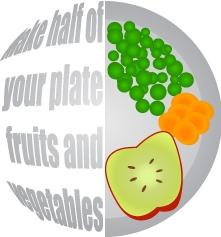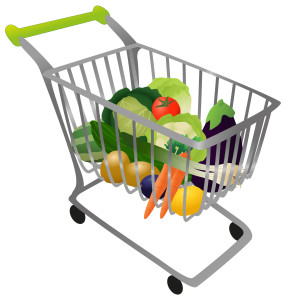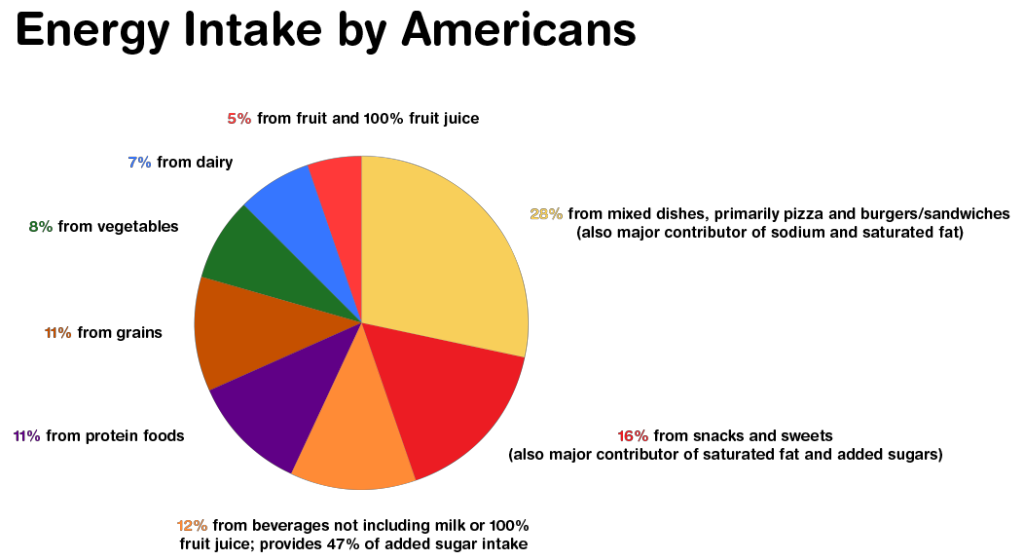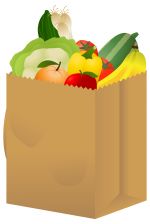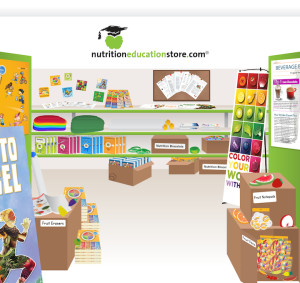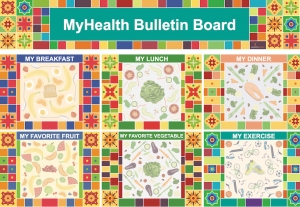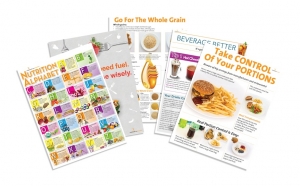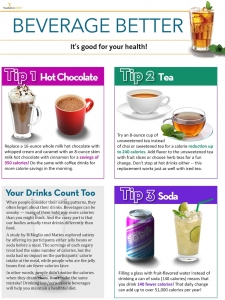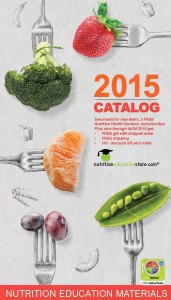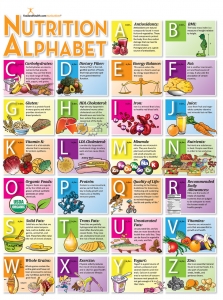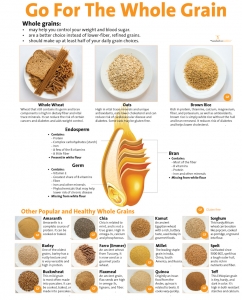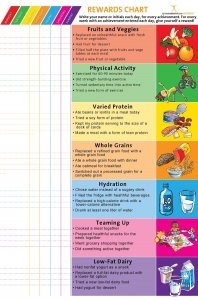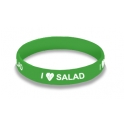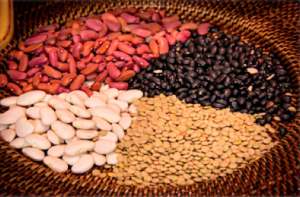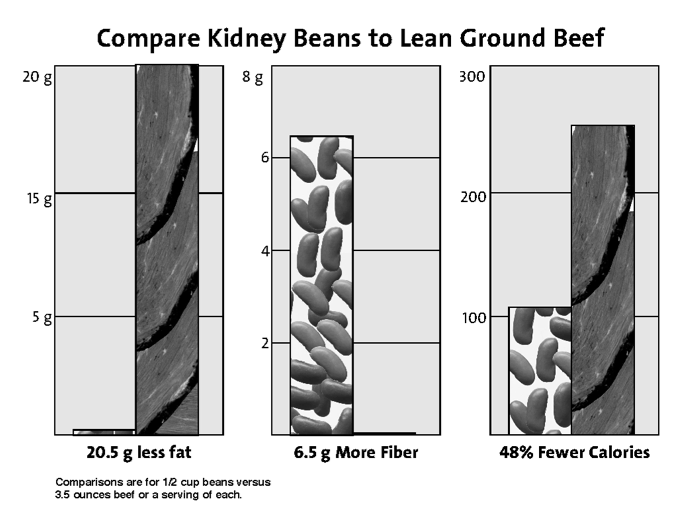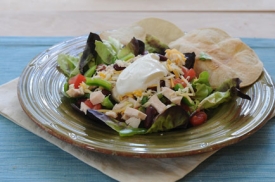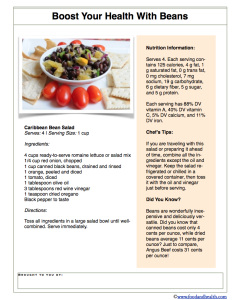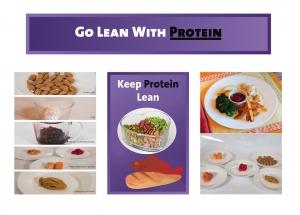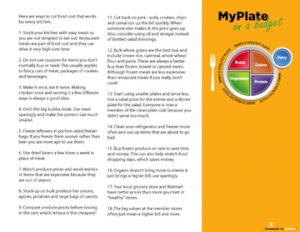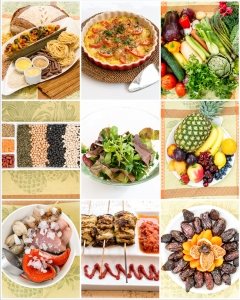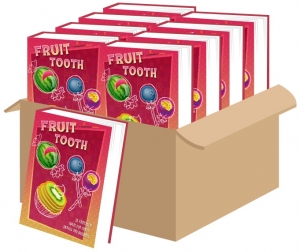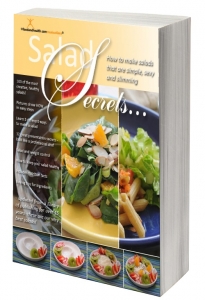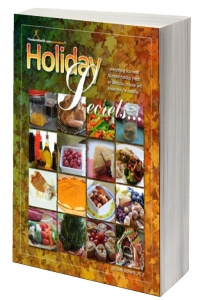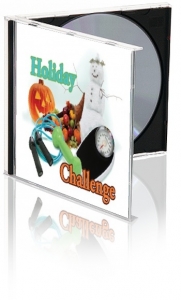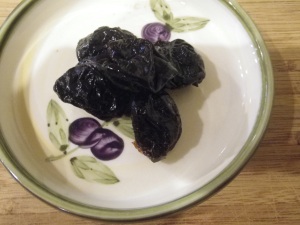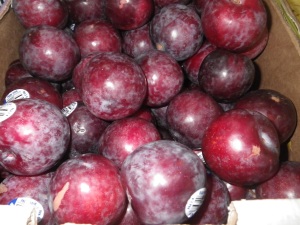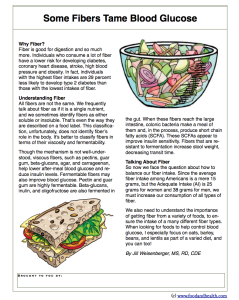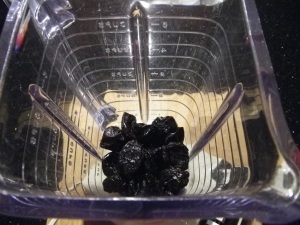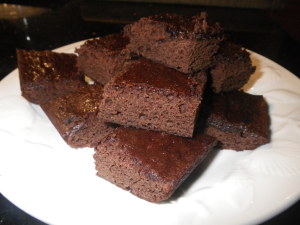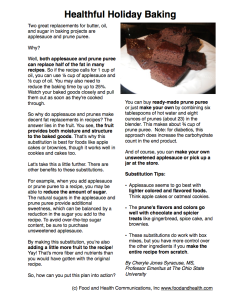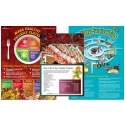It’s time for another reader request!
A few weeks ago, Stephanie Correnti, RD, asked me about vinegars, writing…
Hi,
Hope all is well. Have a request. Do you have a sheet on the different types of vinegars (white, balsamic, red wine, etc) and what they are good on i.e. salads, marinades, etc. I am especially interested in the difference between rice wine vinegar and rice vinegar (this ones has conflicting info).
How they are made, etc.
Thanks,
Stephanie Correnti, RD
How could I resist?
My team and I went to work immediately, and after hours of research and chasing down leads, we have come up with this comprehensive guide to common vinegars. Oh, and we just had to make a fun infographic as well. Here it is — enjoy!
How Vinegar Is Made:
Vinegar is made through a process called double fermentation. The first round of fermentation usually uses yeast to turn a sugary liquid like fruit juice or a starchy food like grain into alcohol. The second round of fermentation turns that alcohol into acetic acid, which is then diluted to make vinegar. Why dilute? Well, the acid is roughly 10% acidic, which is too harsh for cooking, so it is diluted to between 4% and 7% acidity before being sold.
Many vinegar manufacturers only do the second round of fermentation, buying wine stock or distilled alcohol from other sources and taking over the vinegar-making process from there.
 Distilled White Vinegar:
Distilled White Vinegar:
Also known as plain old vinegar, distilled white vinegar is mildly acidic and super versatile. Its title is actually a bit misleading, since it isn’t the distilling process that creates white vinegar. Instead, this kind of vinegar is made by fermenting distilled alcohol. It is usually made from either malt or corn.
How does it taste?
This type of vinegar has roughly 5% acidity, which makes it a pretty mild vinegar. People typically use it in pickling and baking because its gentle flavor adds a quiet bite that doesn’t distract from the flavor of the food being prepared. Try it in our recipes for Anise Barbecue Sauce or Chocolate Beet Cake!
Oh, and fun fact: this kind of vinegar is very common for household cleaning as well.
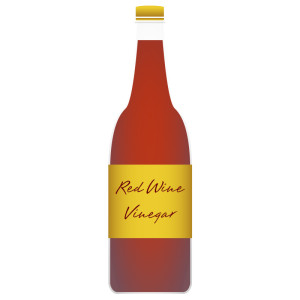 Red Wine Vinegar:
Red Wine Vinegar:
When it comes to vinegars with additional flavor, red wine vinegar is one of the most popular. This high-selling type of vinegar has many different varieties, but all of them are made from red wine. The vinegar is often aged in wooden barrels, and can be “matured” for up to 2 years.
When it comes to quality, there is a wide range. Some versions can have really complex flavors, while others are bitterly sour one-note packages. A good rule of thumb is to look at how long the vinegar has been aged — the longer the better. Some fancy red wine vinegars only use one type of wine or even a single kind of grape. Try a few varieties and see which ones you like best!
How does it taste?
Red wine vinegar has a much more complex and layered flavor than distilled white vinegar. It is perfect for salad dressings or fruit desserts, and it is a very common element in marinades. Give it a whirl by making a Classic Marinade or Berry Brûlée!
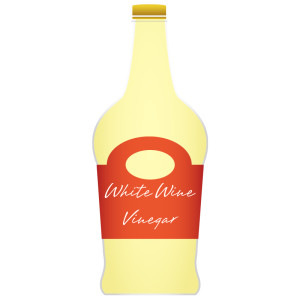 White Wine Vinegar:
White Wine Vinegar:
Like red wine vinegar, white wine vinegar is made from wine that has been further aged in order to produce vinegar. It too is often matured in wooden containers. Less popular than red wine vinegar, white wine vinegar is still super versatile and its flavor profile can vary widely by brand. Look for well-aged varieties and have a taste test to find the flavors that work best for you.
How does it taste?
White wine vinegar’s flavor varies widely from brand to brand. Some options are malty and sour, while others are floral and light. In general, white wine vinegar is great for sauces and salad dressings (especially when the hue matters and you want a light dressing). It complements delicate flavors like the ones found in fish or fruit especially well. Try it in Salmon Macaroni Salad or Peach Salsa.
A note about wine vinegars: As mentioned above, some wine vinegars use a particular kind of wine or only one type of grape to produce their vinegar. If you’d like to further explore the realm of wine vinegars, try champagne vinegar, pinot gris vinegar, or sherry vinegar. There are lots of varieties out there, so feel free to explore!
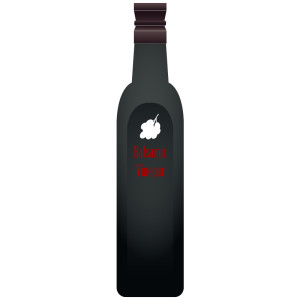 Balsamic Vinegar:
Balsamic Vinegar:
Oh balsamic vinegar. This syrupy, dark, sweet vinegar has been a darling of the food scene for quite some time, adding pep to healthful dishes and depth to indulgent treats. Balsamic vinegar is a versatile flavor powerhouse.
With popularity, however, comes variation and a wide range of quality. All balsamic vinegars must be made from a grape product (no, there’s no balsam in it), but that’s really where the similarities end. Traditional balsamic vinegar comes from the must of white Trebbiano grapes and is aged in wood casks for quite some time, with the aging process lasting anywhere between 12 and 100 years. You can spot this kind of vinegar by its “Protected Designation of Origin” marks — it must come from either the Reggiano Emiliano or Modena provinces of Italy and be aged for at least 12 years.
The more common, less expensive, and by-no-means-traditional form of balsamic vinegar is called “balsamic vinegar of Modena” or simply “balsamic vinegar.” Instead of using the must of white Trebbiano grapes and aging it for many years, this type of vinegar is made by mixing concentrated grape juice with strong vinegar. Artificial colors and flavors are also added — even caramel or sugar.
How does it taste?
The thick and almost syrupy texture of traditional balsamic vinegar masks a relatively high acidity level, creating a mild but layered flavor with undertones determined by the aging process and types of wood casks used. Commercial balsamic vinegar mimics these flavors, though at a shallower and less-developed level. Balsamic vinegar has a very notable taste, so use it when you want a dash of sweet and sour with deeper layers. It makes a great salad dressing and draws out the flavor of ripe fruits, especially berries. It’s also a popular flavoring agent in Italian food, adding zing to everything from bruschetta to panzanella to caprese salads. Once you have some balsamic vinegar of your very own, give it a test run with some Open-Faced Garden Pitas or a Pear and Almond Salad!
A note about white balsamic vinegar: Though it shares the word “balsamic” with traditional balsamic vinegar, that is practically where the similarity ends. White balsamic vinegar is made by cooking grapes under pressure, stopping any caramelization, before aging for one year in un-charred oak barrels. With a light and fruity flavor, this vinegar is a pale yellow color that makes it perfect for light sauces and salads.
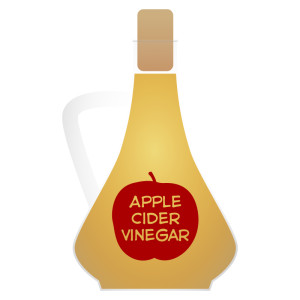 Apple Cider Vinegar:
Apple Cider Vinegar:
This mild vinegar is made from either cider or apple must, fermenting the mixture until a delicate and sweet vinegar is ready for sale. This inexpensive vinegar is a toasty gold color and lends itself well to a variety of culinary uses. Many people buy unfiltered apple cider vinegar for its health benefits, though more research is needed to substantiate those health claims.
What does it taste like?
This mild and fruity vinegar has a distinct apple flavor that is balanced by a gently sour bite. It is a fantastic ingredient in marinades, especially for chicken or fish, but it also peps up chutneys and vinaigrettes. Some home cooks prefer it over distilled white vinegar for quick-pickling fresh produce in the refrigerator. At our test kitchen, we found that apple cider vinegar really perks up the flavor of root vegetables, especially in an Indigo Beet Salad or Sweet Potatoes with Raisin Sauce.
 Rice Vinegar:
Rice Vinegar:
And here’s where the crux of Stephanie’s question lies — what is the difference between rice and rice wine vinegar? After much research, it appears as though rice wine vinegar is a type of rice vinegar, and the two can be used interchangeably in recipes. Rice vinegar can be made from fermented rice itself, rice concentrate, or from rice wine. Rice wine vinegar, as the name might imply, is made only from rice wine. Their flavors are very similar, and either can be used when rice vinegar is called for.
Rice vinegar’s flavor profile changes depending on the region it comes from, and variations like red rice vinegar and black rice vinegar are made from entirely different kinds of rice, with much stronger flavors. For the purposes of this writeup, we’re going to focus on the most common kind of rice vinegar, known as “rice vinegar” or “white rice vinegar.”
What does it taste like?
The rice vinegar that’s most easily available in the United States is a bit harsher than the varieties sold in China and Japan, but it is still notable for a mild and sweet flavor, especially when compared to most other vinegars. With the lowest acidity levels allowed to vinegars sold in the U.S., rice wine vinegar doesn’t have much bite, which makes it perfect for mild boosts of flavor. It’s great in dipping sauces and stir-fries. Try it in Stuffed Baked Potatoes or a Peanut Cabbage Stir-Fry Salad!
There are many varieties of rice vinegar, and lots of them are sweetened or seasoned in some way. This can pep up their flavor profile or get in the way of what you’re cooking, so be sure to choose the right vinegar for the job. Have a taste test and see which options are best for you!
 Malt Vinegar
Malt Vinegar
Making malt vinegar is an interesting process. First barley must be “malted,” transforming the starch in the barley to maltose. From there, the mixture is fermented until it becomes ale, and then it’s aged until it reaches the proper acidity and consistency. Other grains can be malted to make this vinegar, but barley is the most common.
What does it taste like?
Full-bodied and toasty, malt vinegar is most commonly seen as an accompaniment to fish and chips or other British treats. Its deep brown color makes it easy to spot in a lineup of vinegars, and it also makes a great marinade or component of darker sauces. Use it when you want to add a toasty bite to whatever you’re cooking.
Let’s end this post with a free infographic that compares a lineup of the vinegars we’ve explored today! Here’s a PDF just for you.

Keep those requests coming!
Judy Doherty, PC II, Founder of Food and Health Communications, Inc.
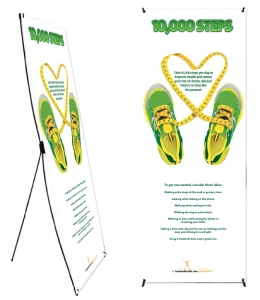
10K Steps Banner and Stand
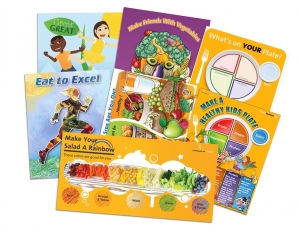
7 Basic Nutrition Posters
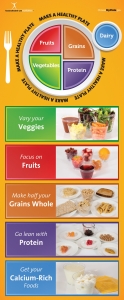
MyPlate Brochure Card
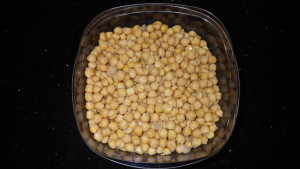 The only time I ever really ate chickpeas was when they were in three bean salad or hummus. That all changed recently, when I started looking for a way to pep up our meals at home. Now these flavor and nutrient powerhouses have become a regular feature in our meal rotation.
The only time I ever really ate chickpeas was when they were in three bean salad or hummus. That all changed recently, when I started looking for a way to pep up our meals at home. Now these flavor and nutrient powerhouses have become a regular feature in our meal rotation.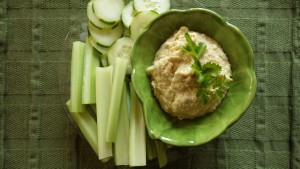 The most common form of chickpeas are pale yellow in color, but they can also be black, brown, green, or red. Their flavor and texture have been described as somewhere between chestnuts and walnuts. When cooked, they have a creamy consistency with a mildly nutty flavor profile. This makes them the perfect base for spiced dishes and stronger flavors.
The most common form of chickpeas are pale yellow in color, but they can also be black, brown, green, or red. Their flavor and texture have been described as somewhere between chestnuts and walnuts. When cooked, they have a creamy consistency with a mildly nutty flavor profile. This makes them the perfect base for spiced dishes and stronger flavors.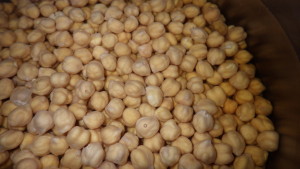 The largest producers of chickpeas are India, Australia, Pakistan, and Turkey, but these beans can also be grown the United States, Canada, and Mexico.
The largest producers of chickpeas are India, Australia, Pakistan, and Turkey, but these beans can also be grown the United States, Canada, and Mexico. But how can you make chickpeas a part of your diet?
But how can you make chickpeas a part of your diet? Greek Pasta Salad
Greek Pasta Salad


